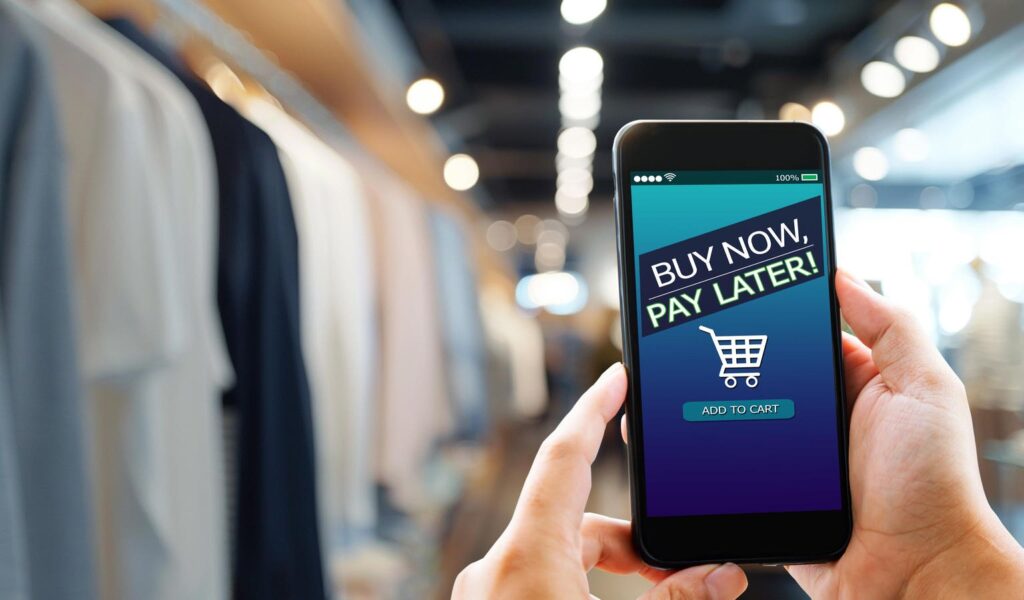Buy Now Pay Later (or, “BNPL”) programs have surged in popularity over recent years and have become an attractive alternative purchase financing option among Millennials and Gen Z. As their name suggests, these services allow consumers to make purchases immediately and pay for them over a series of installments, often free of interest charges. In recent surveys conducted by my firm, 27% of consumers share that they have used BNPL. Additionally, younger users are more likely than older users to continue carrying balances on these programs (48% of 18–34 year-olds, 27% of 35-54 year-olds, and 28% of 55+ year-olds). Consumers love these mini-credit lines to power their purchases. Merchants in kind, embrace the increased sales, average order values and reduced purchase abandonment rates.
I admit, when BNPL first emerged on the scene, I was a little uncertain of its uniqueness and appeal. After all, the BNPL value proposition felt like a credit card offer (and even more specifically, a private label credit card offer) in that payments would be interest free if the charged balances were paid off by a certain time period. Early on I had also heard from colleagues in the payment space who were skeptical of BNPL, wondering if they were just modern-day incarnations of traditional layaway plans offered by various retailers years ago.
In a sense, BNPL is a bit like a combination of both, but packaged in a way to optimally appeal to a younger generation that may be wary of traditional lending products. Our survey data confirms this, as the younger the consumer, the more likely they are to prefer BNPL over credit cards (40% of 18-34 year-olds, 35% of 35-54 year-olds, and 20% of 55+ year-olds).
The use cases for them, the psychological underpinnings of their appeal, and the overall perception of this new category of loans make them a powerful competitor at the point of sale.
There are several unique aspects of BNPL that have truly struck a chord with users:
- Their immediacy: Loan decisions and repayment options are presented at the point of sale shortly after initiating a BNPL plan request. Additionally, and unlike layaway (but similar to credit cards), a customer takes ownership of the products immediately upon purchase. The nearly instant gratification of product acquisition and a financing decision very much aligns with consumer expectations of today’s shopping environment.
- Their certainty: The program once approved, covers the price of the transaction completely. Payment options by amount and time period, are clearly presented to the customer for selection without any confusion or hidden details. As payments are extended over a period of time longer than a traditional credit card billing cycle, customers are able to manage their cash flow better while avoiding any interest or fee penalties. Finally, when payments have all been made, the line of credit is closed, generating a strong satisfying psychological sense of completion and accomplishment.
- Their accessibility: As most customers are able to qualify for BNPL programs, these loans extend purchasing power to a population segment who may not ordinarily be approved for a traditional credit card. Additionally, BNPL programs are starting to become available beyond just retail merchants, such as at travel sites and other services.
Additionally, one of the most powerful ways these fintechs are winning with younger customers is their seamless integration with their merchant partners. They have truly positioned themselves as “product acquisition enablers” versus a “financial services provider”. In fact, just a visit to two popular BNPL providers’ websites, Klarna and Affirm, reveals that they look more and more like an online retailer than a financial services provider! Therefore, for younger consumers, the competitive arena in which payment choice will be battled will increasingly be within the purchase experience at the merchant.
Years ago, customers used to reference their credit cards by network (e.g. “my AmEx card” or “my Visa card”), which eventually evolved into referring to cards by issuer (e.g. “my AmEx card”, “my Chase card”, or “my Cap One card”). Most recently, consumers are now referring to their payment cards as the product name (e.g. “my Platinum card”, “my Sapphire card”, “my SkyMiles card”). This reflects the evolution of consumer perceptions and affinities for their payment products. To date, consumers using BNPL have yet to talk about their “BNPL plans”, “Klarna plans” or “Affirm plans” (for example). While perhaps the charged amounts may not require any kind of reference to them, given their embedment into the purchase experience, I suspect that the branding of the plan itself is secondary to the product purchased and therefore, there is minimal mention of BNPL plans.
While traditional banks have also entered into the BNPL space with their own at-POS purchase financing products, they too will need to integrate into the purchase experience of their merchant partners in order to effectively compete for these new, younger consumers while simultaneously, continue to compete on the product itself among more established consumers with cobrand relationships, rewards points and exclusive access and experiences.
All these elements of BNPL plans have collectively created a sense of positivity around these programs. They seamlessly blend in with the purchase experience, payment terms are easy to understand, and there are no lingering obligations or management tasks required of the customer once all payments have been made. When compared to the friction of applying (and getting approved) for a credit card, its pricing intricacies on revolved balances, and its various other potential fees that can be charged, it’s no wonder that BNPL programs have resonated strongly with a younger generation of consumers who are generally debt averse and cautious about long term financial commitments.
Read the full article here


